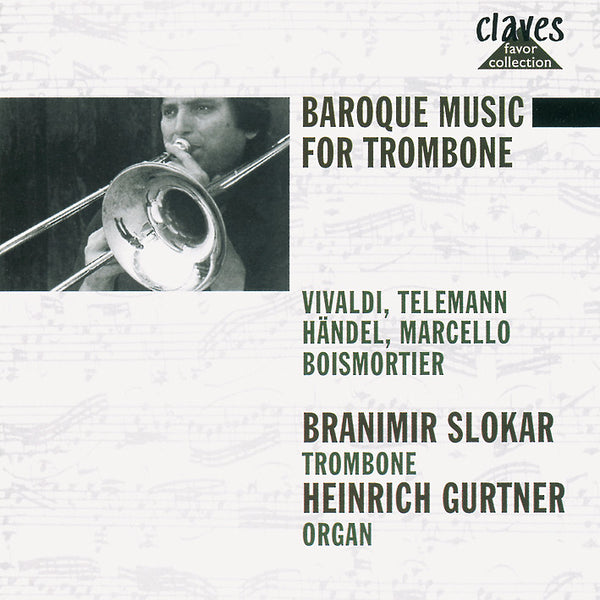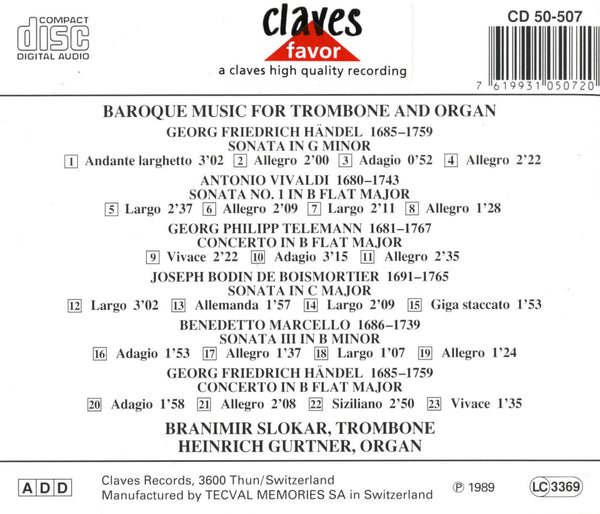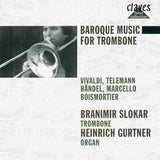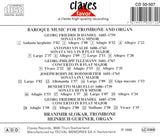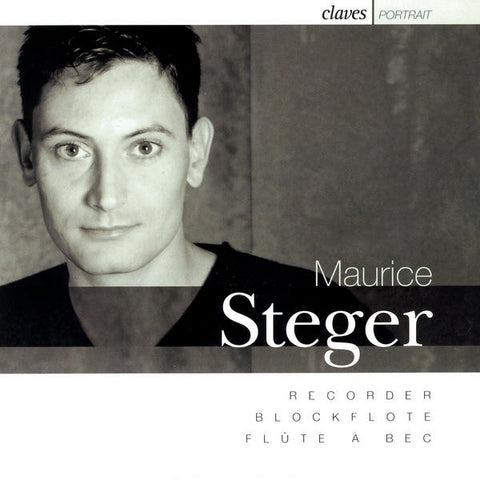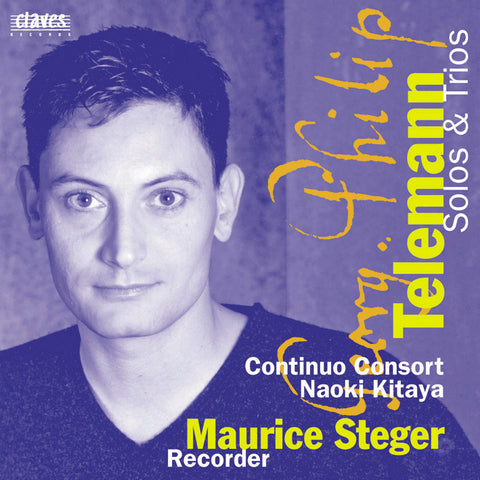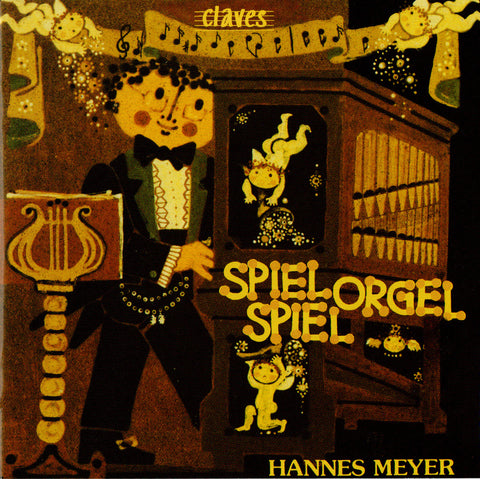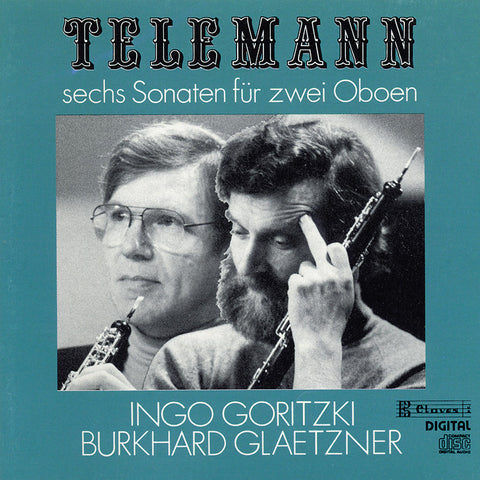(1975) Baroque Music For Trombone: Vivaldi / Telemann / Handel / Marcello / Boismortier
Category(ies): Ancient music Concerto Rarities
Instrument(s): Organ Trombone
CD set: 1
Catalog N°:
CLF 507-9
Release: 1989
EAN/UPC: 7619931050799
This album is now on repressing. Pre-order it at a special price now.
CHF 18.50
This album is no longer available on CD.
This album has not been released yet. Pre-order it from now.
CHF 18.50
This album is no longer available on CD.
This album is no longer available on CD.
VAT included for Switzerland & UE
Free shipping
This album is now on repressing. Pre-order it at a special price now.
CHF 18.50
This album is no longer available on CD.
This album has not been released yet.
Pre-order it at a special price now.
CHF 18.50
This album is no longer available on CD.
This album is no longer available on CD.
NEW: Purchases are now made in the currency of your country. Change country here or at checkout
BAROQUE MUSIC FOR TROMBONE: VIVALDI / TELEMANN / HANDEL / MARCELLO / BOISMORTIER
Sonatas and concertos of the Baroque period played on a trombone: what might seem like a total negation of a sound historical reproduction, is in fact stylistically – in the spirit of baroque performing practice – perfectly conceivable. The Sonata in G minor for viola da gamba and harpsichord by G. Fr. Händel is for example according to his autograph originally written for violin and only secondly for viola da gamba (following Händel’s own footnote).
The publication of this sonata as Sonata VI in the Solos for A German Flute a Hoboy or Violin with a Thorough Bass for the Harpsichord or Bass Violin finally envisages this same Sonata in G minor being performed on the oboe. The matter is similar in the case of the Sonata in G major by J.B. de Boismortier, which, as Sonata II a of his Oeuvre cinquantième is intended, according to tis title pour les violoncelles, bassons ou violes, avec la basse.
If besides the violoncello and the viola da gamba the bassoon – at that time a wind instrument on which the player could display his virtuosity – was frequently interchangeable as a solo instrument, why not then the trombone? In the days of the thorough – bass such optional instrumentation was a much employed principle of performance. In addition the trombone, whose goes back to the early 15th century, was together with the viola da gamba, violoncello, violone and bassoon in use as a bass instrument.
As a wind instrument the trombone finds its ideal partner in the organ. For the present performance the Silbermann organ of the church of St. Leonhard in Basle was available. The Great Organ was built by Andreas Silbermann in the year 1718, the Choir Organ by his son Johann Andreas Silbermann in 1771. Reconstruction in 1969 by Th. Kuhn AG, Männerdorf.
(1975) Baroque Music For Trombone: Vivaldi / Telemann / Handel / Marcello / Boismortier - CLF 507-9
Sonatas and concertos of the Baroque period played on a trombone: what might seem like a total negation of a sound historical reproduction, is in fact stylistically – in the spirit of baroque performing practice – perfectly conceivable. The Sonata in G minor for viola da gamba and harpsichord by G. Fr. Händel is for example according to his autograph originally written for violin and only secondly for viola da gamba (following Händel’s own footnote).
The publication of this sonata as Sonata VI in the Solos for A German Flute a Hoboy or Violin with a Thorough Bass for the Harpsichord or Bass Violin finally envisages this same Sonata in G minor being performed on the oboe. The matter is similar in the case of the Sonata in G major by J.B. de Boismortier, which, as Sonata II a of his Oeuvre cinquantième is intended, according to tis title pour les violoncelles, bassons ou violes, avec la basse.
If besides the violoncello and the viola da gamba the bassoon – at that time a wind instrument on which the player could display his virtuosity – was frequently interchangeable as a solo instrument, why not then the trombone? In the days of the thorough – bass such optional instrumentation was a much employed principle of performance. In addition the trombone, whose goes back to the early 15th century, was together with the viola da gamba, violoncello, violone and bassoon in use as a bass instrument.
As a wind instrument the trombone finds its ideal partner in the organ. For the present performance the Silbermann organ of the church of St. Leonhard in Basle was available. The Great Organ was built by Andreas Silbermann in the year 1718, the Choir Organ by his son Johann Andreas Silbermann in 1771. Reconstruction in 1969 by Th. Kuhn AG, Männerdorf.
Return to the album | Main Artist: Branimir Slokar






